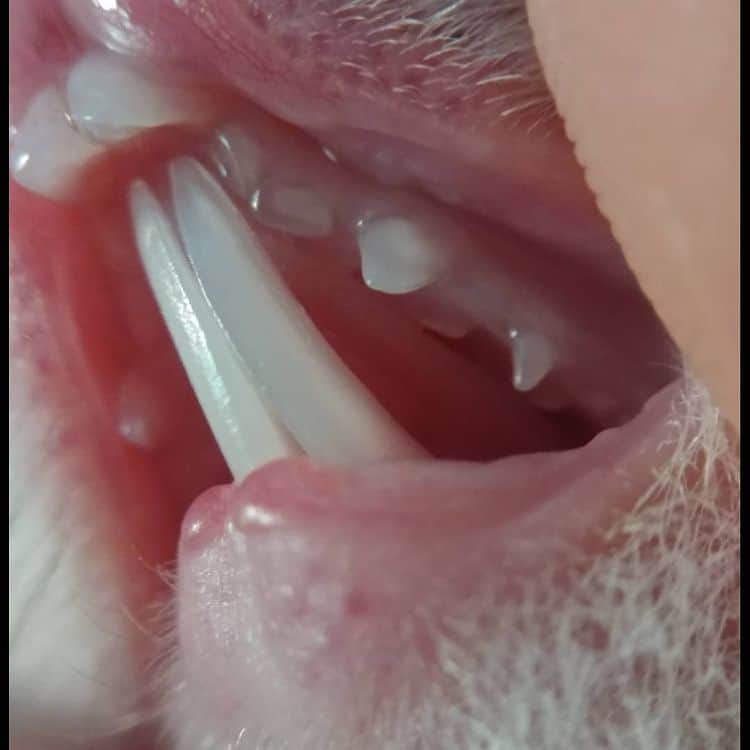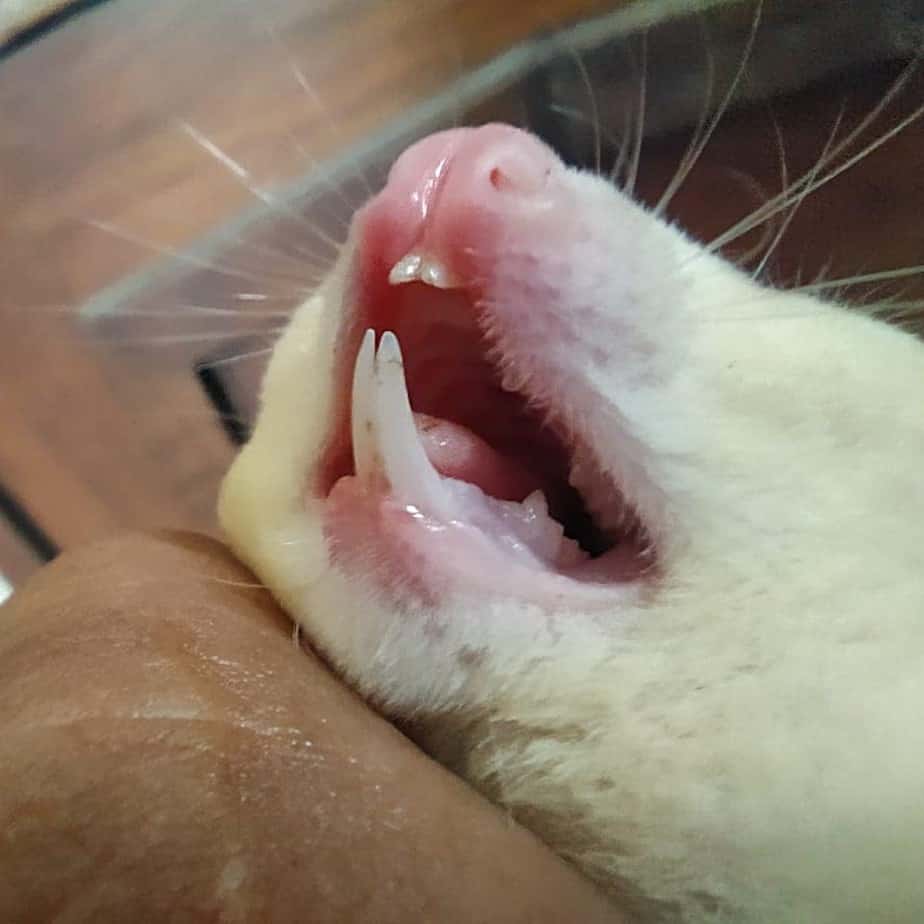Sugar gliders are known for their large, round, black eyes and cute face. However, one part of these adorable animals that people do not see very often is their teeth. As such, people do not know a whole lot about them which leads to many people asking questions and being left in the dark about one of the most important parts of the sugar glider’s body. Their teeth are important because they use them to eat, but unfortunately, gliders are quite prone to teeth problems.
If you’ve always wanted to learn more about sugar glider teeth, you’ve come to the right place because today we’re going to go over the top 5 facts about them. Let’s get started.
1. Sugar gliders have 40 teeth

Sugar gliders have a total of 40 teeth. Their dental formula is I (3/2) C (1/0) PM (3/3) M (4/4). The letters I, C, PM, and M stand for incisors, canines, premolars and molars. So, what the aforementioned dental formula means is that sugar gliders have 3 incisors in the top jaw and 2 on the bottom, 1 canine on the top and 0 on the bottom, 3 premolars on the top and 3 on the bottom, and 4 molars on the top and the bottom jaw.
2. Sugar glider teeth do NOT grow throughout their life
Many people mistake sugar gliders for rodents, but that’s completely wrong. They’re actually members of the marsupial family. Because of this misunderstanding, people sometimes believe that the teeth of sugar gliders grow throughout their lifetime, similar to the teeth of rats or mice. However, this is don’t the case.
The teeth of sugar gliders do not continuously grow and therefore they do not have to be trimmed, filed, clipped, or ground down. In fact, by doing this you actually harm them, which is why it’s so important to be properly informed before taking drastic steps such as these.
Also, when buying a sugar glider it’s important to check if this has already happened to their teeth. In some cases, breeders or sellers will clip the bottom teeth and then sell them. They might claim that this is normal and will help to prevent biting, but it’s a very inhumane practice that should not be supported.
3. Their incisors are used to gouge tree bark

The incisors of sugar gliders are quite long and pointy. The reason why is because they use those to gouge tree bark to access the sweet nectar that’s found inside. Have you ever wondered where the name “sugar glider” comes from? Well, it’s because these little marsupials are addicted to anything sweet, including tree nectar. Without their long, sharp incisors, they wouldn’t be able to access the delicious tree sap, which is why they’ve evolved to have them.
4. Their bites are not poisonous
Due to the fact that sugar gliders are exotic animals, people sometimes wonder if their bites are poisonous. Luckily, this is not the case. Sugar gliders have no poison or venom, and while they do sometimes bite people, their bites are pretty harmless.
Sugar gliders are exotic animals that will never be fully domesticated like a cat or a dog would, even though it definitely is possible to form strong bonds with them. Because of that, it’s difficult to prevent biting completely. In fact, sugar gliders sometimes even give soft lovebites out of affection!
5. Sugar gliders are prone to tooth problems
Dental issues such as abscesses and tooth decay are quite common in sugar gliders. One of the reasons why sugar gliders are more prone to tooth problems than other animals is because they feed on large amounts of soft, sugary foods which leads to tartar buildup which can result in tooth decay. In extreme cases, the teeth might even have to be pulled by a veterinarian. These problems usually arise when the gliders get older.
Signs to look out for to tell if your glider has tooth problems are:
- Yellowing/browing of the teeth
- Bad breath
- Bumps under the chin
- Loose teeth
- Loss of appetite
- Weight loss
You can easily check your glider’s teeth by pulling down their lower lip. While this should not be considered a replacement for an examination by a vet, it’s a good way to check if their teeth are okay. If you notice that anything is wrong you should take them to a vet for treatment.
To prevent tooth problems in sugar gliders, it’s important that you feed them a good diet. It’s very important that they get enough calcium and it’s recommended that you feed them a diet that contains kibble or dubia because it’s more abrasive and helps get the gunk out from between their teeth.
Final words
The teeth of sugar gliders are an often underlooked aspect of their body, even though they have 40 of them! Gliders use their teeth for biting and eating. However, due to the fact that they prefer eating sugary foods, they’re prone to tooth decay and other dental problems. Luckily, this is largely avoidable through a good diet and proper inspections from time to time.
- How Long Do American Eskimo Dogs Live? Important Factors and Care Tips - September 29, 2023
- Do American Bulldogs Need Grooming? Essential Tips and Care Guidelines - September 29, 2023
- Do Bengal Cats Enjoy Playing? Essential Tips for Keeping Them Active - September 29, 2023